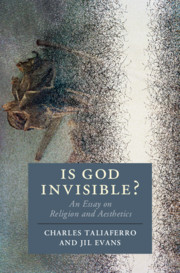Book contents
- Is God Invisible?
- Cambridge Studies in Religion, Philosophy, and Society
- Is God Invisible?
- Copyright page
- Contents
- Figures
- Web Figures
- Acknowledgments
- Introduction
- 1 Aesthetic Personalism
- 2 Is God Invisible?
- 3 The Gates of Perception
- 4 The Perception of Gates
- 5 The Beautiful Gate
- 6 Revealing and Concealing
- 7 Public Perception of Religious and Art Objects
- 8 A Personal Guide to the Aesthetic Experience of Works of Art
- Epilogue
- Index
8 - A Personal Guide to the Aesthetic Experience of Works of Art
Published online by Cambridge University Press: 30 March 2021
- Is God Invisible?
- Cambridge Studies in Religion, Philosophy, and Society
- Is God Invisible?
- Copyright page
- Contents
- Figures
- Web Figures
- Acknowledgments
- Introduction
- 1 Aesthetic Personalism
- 2 Is God Invisible?
- 3 The Gates of Perception
- 4 The Perception of Gates
- 5 The Beautiful Gate
- 6 Revealing and Concealing
- 7 Public Perception of Religious and Art Objects
- 8 A Personal Guide to the Aesthetic Experience of Works of Art
- Epilogue
- Index
Summary
We began this book with a comparison of the visibility and invisibility of persons and God, stressing the importance of being available to others and the transcendent; we have reflected too on the importance of examining different, ever-expanding points of view when it comes to aesthetics and values. In this chapter we offer a personal guide to enhancing aesthetic experiences of and through works of art.
While this chapter pertains to works of art in almost any context, the focus is on the engagement of works of art in museums. Although we addressed two museum experiences in Chapter 7, we offer some further reflections on museums here, before presenting our guide to the aesthetic experience of works of art.
- Type
- Chapter
- Information
- Is God Invisible?An Essay on Religion and Aesthetics, pp. 153 - 170Publisher: Cambridge University PressPrint publication year: 2021

